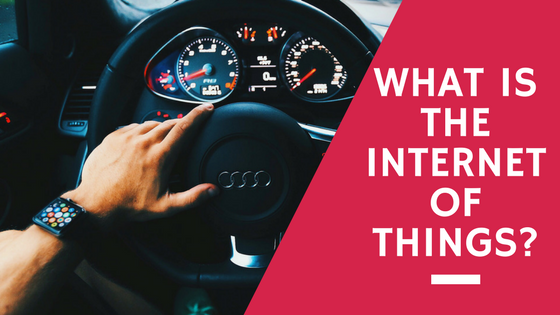Popularized by the explosion of wifi-enabled technology, the phrase Internet of Things (often abbreviated IoT) usually refers to the interconnectedness of physical items to the world wide web via wifi or cellular communication. Describing a device as a “smart” device often refers to the same general phenomenon. This “connection” is made possible by sensors and software that allows for remote monitoring and control of said device. Today’s Internet of Things is the stuff of science fiction, marked by self-driving cars, bluetooth enabled refrigerators, apps that turn off your lights from anywhere in the world, and voice-command devices that answer questions and performs on command.
The idea that things could be connected to each other and to a wider network first captured national attention in 1982, when a Coca Cola machine installed at Carnegie Mellon University in Pittsburgh, PA, was programmed with the ability to report its inventory and detect the temperature of recently-loaded drinks. The actual term Internet of Things was coined in 1985 by Peter T. Lewis during a speech he delivered to a Congressional Black Caucus, during which he said, “The Internet of Things, or IoT, is the integration of people, processes and technology with connectable devices and sensors to enable remote monitoring, status, manipulation and evaluation of trends of such devices.” Since then, the term has been adopted in academia, predictive analytics, and technology forecasting to describe the exponential growth of “smart” items, devices, and tools.
Over the past 10 years or so, broadband internet has become less expensive and more widespread. Simultaneously, more and more items have been constructed with wifi capability. Thus, we found ourselves with all the ingredients for an explosion in the field of Internet of Things.
Some items that fall into the “internet of things” have come as welcome advancements in medicine and health. Some heart monitors and glucose monitors, for example, can connect to a smartphone or computer to capture and log data regarding its measurements and the wearer’s health. On a less extreme level, this comes in the form of sports technology like a fitbit or jawbone, which tracks movement and sleep schedules.
Some items in the Internet of Things, by contrast, benefit the home and pander to those who have the funds to make everything in their houses interconnected. Appliances like dishwashers, coffee pots, and refrigerators are now equipped with the ability to sync to a smartphone and take commands from anywhere in the world. Amazon has been on the forefront of developing IoT for the home by producing and pushing Amazon Echo and Amazon Dash buttons to assist in keeping up a home.
The Internet of Things also extends from just the home to beyond. Headlines have touted the continued testing of self-driving autonomous cars. Elon Musk and some progressive European cities have begun designing and implementing the concept of the smart city. In such a city, the assets and properties, including transportation, parks, libraries, schools, roads, hospitals, etc., would all be interconnected via IoT and communications tech.
The future of the Internet of Things looks more and more connected. Gartner, Inc., predicted in 2015 that the number of interconnected “things” will reach 20.8 billion by 2020. As time marches on and “things” become more and more connected, law, research, and human interactions will alter and adapt to keep up with developments.
